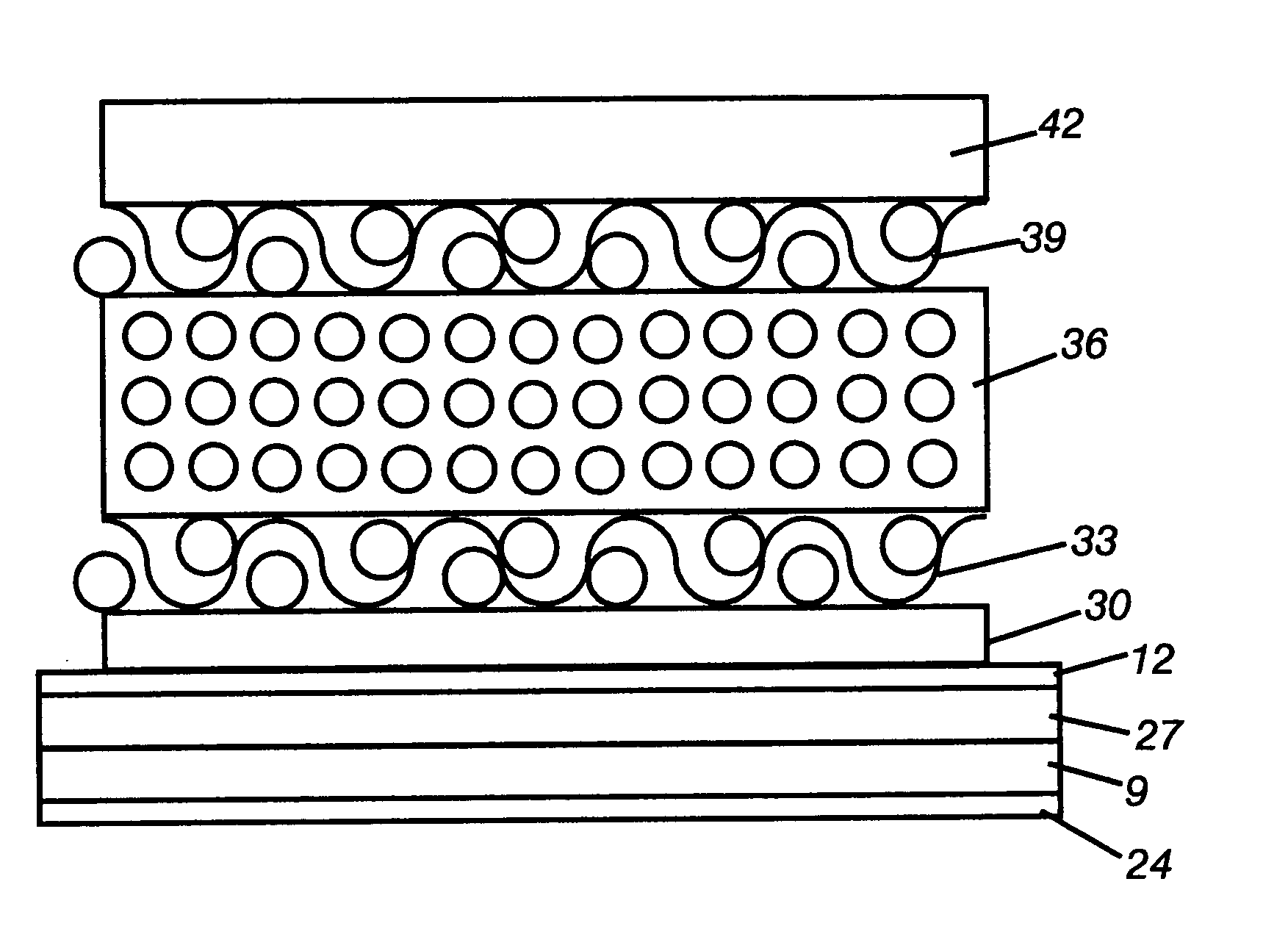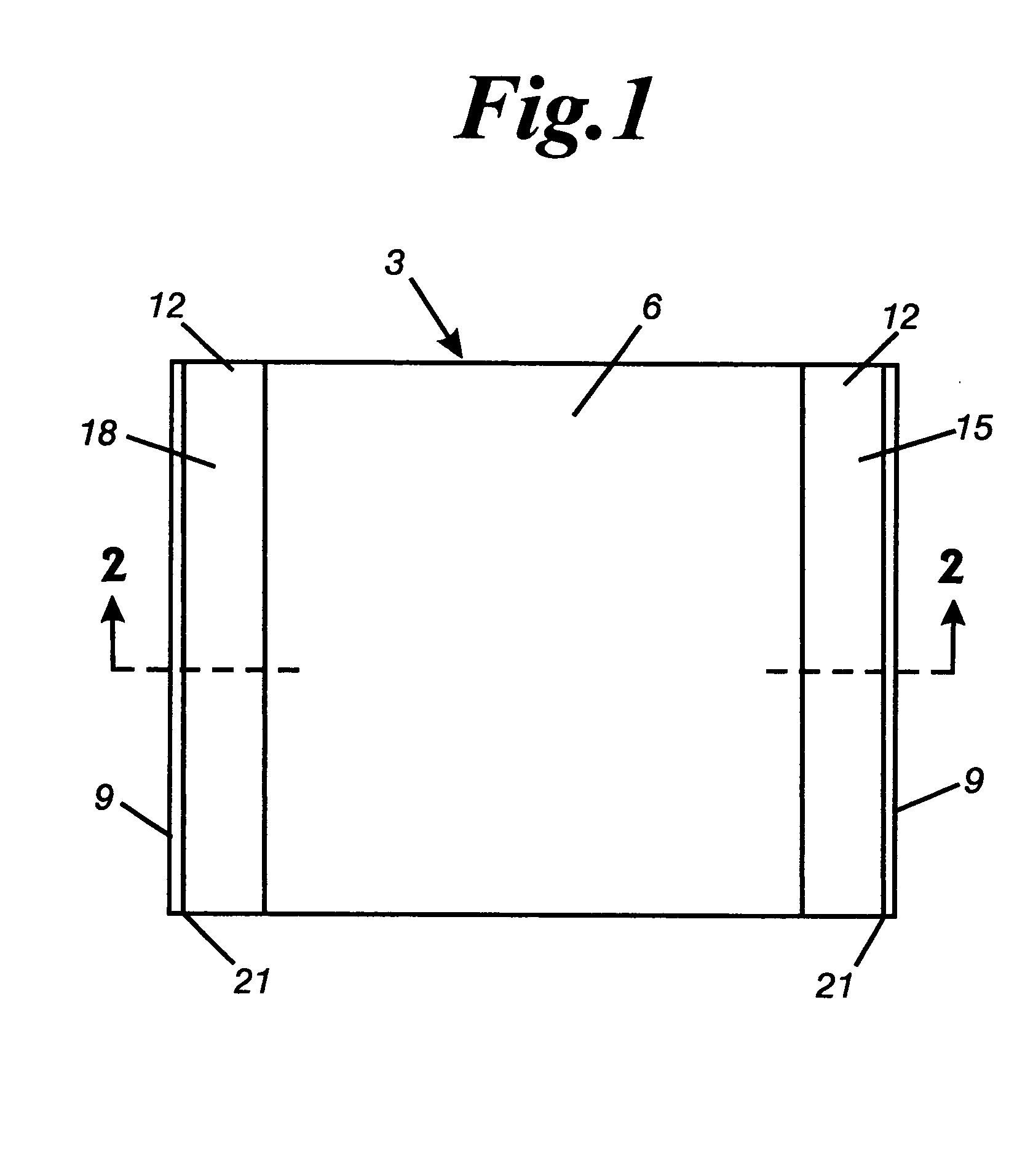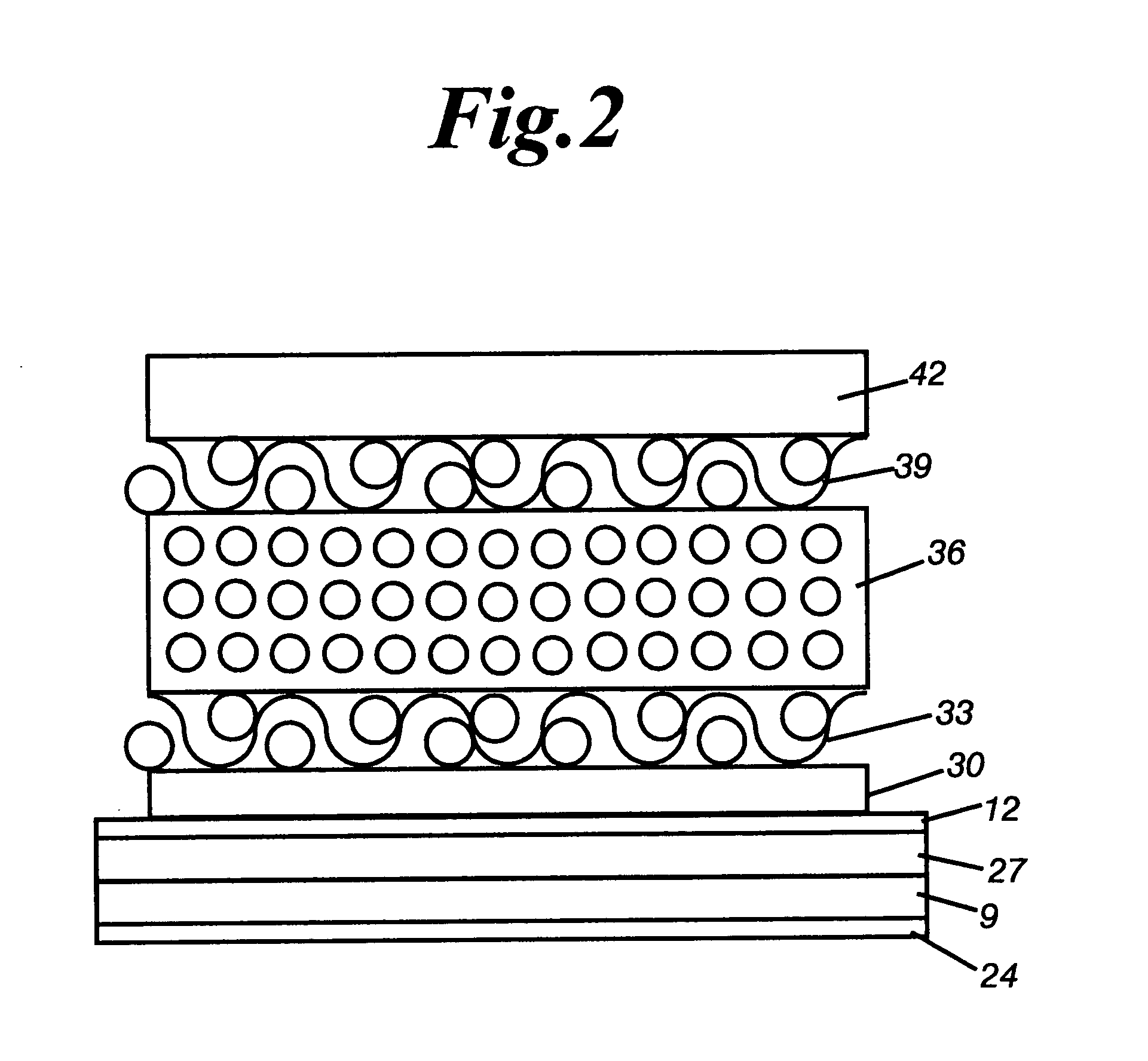Metal-backed printing blanket
- Summary
- Abstract
- Description
- Claims
- Application Information
AI Technical Summary
Benefits of technology
Problems solved by technology
Method used
Image
Examples
Embodiment Construction
[0029]FIG. 1 illustrates an embodiment of a printing blanket 3 of the present invention, which shows generally the compressible printing blanket 6, an anti-slip layer 12, and a terminal portion 21 of a metal base plate 9 with a specialized coating layer (shown in FIGS. 2 through 4) applied to the backside thereof, lying in a flattened position. For convenience of understanding the invention, FIGS. 2 through 4 provide greatly exaggerated cross-sectional views of the printing blanket 3 showing the different layers of a preferred embodiment of the invention. These layers, together with their associated features, are discussed below.
[0030] For purposes of the present discussion, the terms “bottom” and “lower” and the like are used to refer to that portion of an individual layer or set of layers that is most nearly adjacent to the cylinder upon which the blanket of the present invention is mounted. Conversely, the “top” or “upper” portion of an individual layer or set of layers is that ...
PUM
 Login to View More
Login to View More Abstract
Description
Claims
Application Information
 Login to View More
Login to View More - Generate Ideas
- Intellectual Property
- Life Sciences
- Materials
- Tech Scout
- Unparalleled Data Quality
- Higher Quality Content
- 60% Fewer Hallucinations
Browse by: Latest US Patents, China's latest patents, Technical Efficacy Thesaurus, Application Domain, Technology Topic, Popular Technical Reports.
© 2025 PatSnap. All rights reserved.Legal|Privacy policy|Modern Slavery Act Transparency Statement|Sitemap|About US| Contact US: help@patsnap.com



